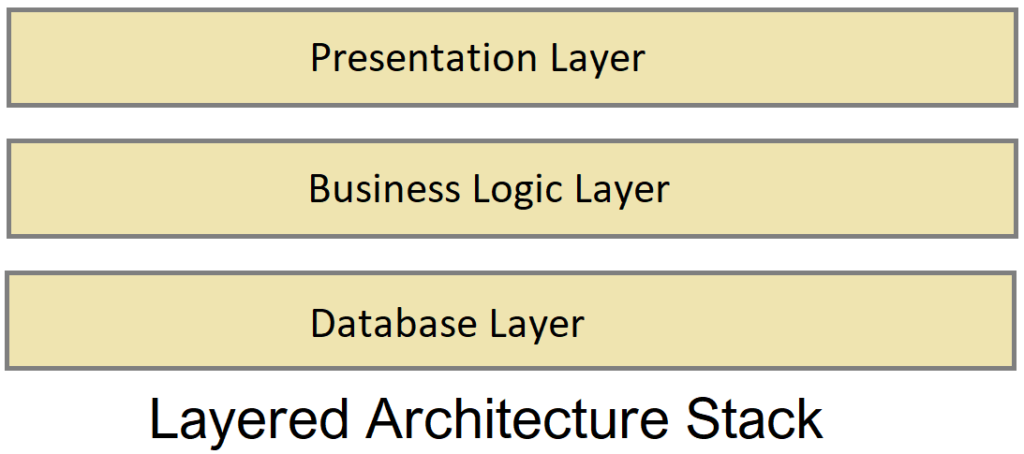The most well-known architecture design is the Layered Architecture design, also called the n-tier architecture design.

The layered architecture design intently coordinates with the conventional IT correspondence and authoritative constructions seen as in most organizations, settling on it a characteristic decision for most business application development endeavours.
Albeit the layered architecture design doesn’t indicate the number and kinds of layers that should exist in the example. The most layered architectures comprise four standard layers: show, business, ingenuity, and information base.
Each layer of the layered architecture design plays a particular part and obligation inside the application. For instance, a show layer would be liable for taking care of all UI and program correspondence rationale, while a business layer would be liable for executing explicit business rules related to the demand.
One of the amazing highlights of the layered architecture design is the partition of worries among parts. Parts inside a particular layer manage rationale that relates to that layer.
Each layer in the architecture frames a reflection around the work that should be done to fulfil a specific business demand. For instance, the show layer doesn’t have to know or on the other hand stress over how to get client information; it just necessities to show that data on a screen specifically design.
Likewise, the business layer shouldn’t be worried about how to arrange client information for the show on a screen or even where the client information is coming from; it just requirements to get the information from the tirelessness layer, perform business rationale against the information.
Let’s look at 4 major factors of Software Development where Layered Architecture is good or bad?
Development
If you talk about the development process then this architecture gets a moderately high score, it isn’t excessively complex to carry out. This is one of the most used architecture patterns, so most of the developers in the industry can implement Layered Architecture in an easy way.
Testability
As parts have a place with explicit layers in the architecture, different layers can be ridiculed or hit, making this example is generally simple to test. A designer can deride a show part or screen to segregate testing inside a business part, just as fake the business layer to test certain screen usefulness.
Scalability
On account of the pattern toward firmly coupled and solid executions of this example, applications fabricated utilizing this architecture design are by and large hard proportional. You can scale a layered architecture by dividing the layers into discrete actual deployments or recreating the whole application into different hubs, yet generally, the granularity is excessively expansive, making it costly proportional. So, Layered Architecture is not a good choice for scalability.
Deployment
One little change to a part can require a redeployment of the whole application.
Bringing about deployments that should be arranged, booked, and executed during off-hours or on ends of the week. It isn’t great architecture for continuous deployment.
Know everything about Good Software ArchitectureHope you got an idea about Layered Architecture and also you can decide where to use it or not.

Leave a Reply